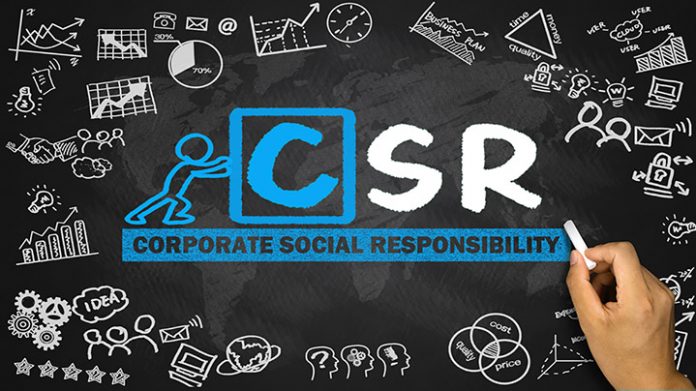This article has been written by Rahul Sharma pursuing the Certificate Course in Labour, Employment and Industrial Laws for HR Managers from LawSikho. This article has been edited by Zigishu Singh (Associate, Lawsikho).
Table of Contents
Introduction
Corporate Social Responsibility (CSR) is one such area where we all want to contribute but most of us struggle with identifying the first step. In this article, I want to approach this topic in detail so that you are confident when approaching this matter in your next corporate meeting.
Where to start?
Draft a CSR policy
As per rule 6 of the Companies (Corporate Social Responsibility Policy) Rules, 2014, the CSR policy of the company should include the following at the minimum:
a) a list of CSR projects or programs that a company is planning to do;
b) The modalities and execution framework of the program with timelines;
c) Monitoring process of the CSR program.
Also, the company should ensure the CSR activities listed are not in pursuance of normal course of business. It should also ensure that the list of activities in the CSR program are related to the areas/subjects listed in Schedule VII of the Act. Also, The CSR Policy of the company should list that the surplus arising out of the CSR projects or programs, or activities does not form part of the business profit of a company.
Human Resources(HR) departments can help the management draft this policy keeping in mind the above listed points.
i) Identify possible initiatives for the purpose of CSR contribution: The list of activities in CSR programmes are related to the areas/subjects listed Schedule VII of the Companies act 2013. Some of them are as follows: Working on initiatives that aim to eradicate hunger, poverty and malnutrition, promoting education, promoting gender equality, ensuring environmental sustainability, protection of national heritage, art and culture, etc
ii) Form a CSR committee to manage the programs: Under section 135(1) of Companies Act, every company having a net worth of rupees five hundred crore or more, or a turnover of rupees one thousand crore or more, or a net profit of rupees five crore or more during the immediately preceding financial year, must constitute a Corporate Social Responsibility Committee of the Board consisting of three or more directors, out of which at least one director shall be an independent director.
How to arrive at a budget?
The Board of every applicable company must ensure that the company spends, in every financial year, at least two percent of the average net profits of the company made during the three immediately preceding financial years. This is your baseline figure to get started and it depends on your organizational goals and CSR policy what you decide to spend on your programs.
What can HR departments do to ensure that these programs are executed well and the real value is realized on CSR programs?
Apart from nurturing CSR programs and doing regular audits of the initiatives, HR can ensure that local welfare and social development are on priority when creating a list of initiatives for CSR activities. Also, CSR at its core is not only about its specific welfare programmes but it is also related to how HR can ensure that they become part of the organizational culture and its basic tenets; like, human rights, fair operating practices (fairness and respect), environmental protection, corporate governance and labor welfare.
In addition to the above, you can also go into specific CSR compliances listed as per ISO 26000.
| Category | Possible Actions for HR |
| Labour ❏ Aim to eliminate child labour and forced labour. ❏ Ensure compliance with laws and regulations regarding the rights of unions and collective bargaining, and social protection (medical coverage, disability leave, etc.). ❏ Make sure that there is no discrimination in hiring and dismissals. ❏ Understand and controls the health and safety risk involved in activities; provide safety equipment and training. ❏ Avoid contract with suppliers or sub-contractors that use unfair or abusive labour practices, including child labour. | Be compliant with prohibition of child labour act. Do a regular audit of suppliers to ensure that they are compliant as well.Create and maintain the dashboard of compliance for labour laws. Ensure that there is a system for collective bargaining.Create and ensure adherence to the policy on being an equal opportunity employer/Initiate change in management programs for ensuring safety. HR can anchor initiatives on safety such as fire drills, safety training for workers etc. so that both new and existing employees are compliant. |
| Organizational governance ❏ Incentivize the performance on social responsibility to ensure that people who oversee them are prioritizing it. ❏ Allow your organizational structure to include third-party review of sensitive areas such as financial management, etc. ❏ Create ways to track decisions and their implementation, to ensure accountability and follow-through. | Include performance on social responsibility as a metric, for those involved, in their appraisals so that they can identify the priorities of CSR initiatives. Make sure that reputed external agencies are employed to have regular audits of financial and HR transactions. Create a simple metric to measure organisational effectiveness and clearly define organisational goals for the key people. Create a code of conduct policy for the employees that is visible, actionable and allows for correction mechanisms |
| Environment ❏ Reduce carbon emissions and pollutants into the air, water and soil as much as possible. ❏ Upgrade to life-cycle approach (including disposal) – aim to reduce waste, re-use products or components, and re-cycle materials | Create an internal environmental board for following through the initiatives. This board would consist of senior management members who will be accountable for organisational decisions that would impact the environment. Align your organization with SDG goals laid out by the department of economic and social affairs of the United Nations. https://sdgs.un.org/goals |
| Fair Operating Practices ❏ Practice honesty, respect for property rights, fair compensation and treat your suppliers and customers fairly. | Draft and regularly update the code of conduct policy. Organise training sessions for employees on this policy. |
| Human rights ❏ Identify and respond to members of vulnerable groups within their sphere of influence. ❏ Make sure that people from vulnerable groups are properly treated such as: indigenous peoples, girls and women, those historically discriminated against on the basis of race, ethnicity or religion, people with disabilities, the elderly, migrants, etc. ❏ provide remedy and grievance procedures. | Have zero-tolerance of cases of abuse, sexual harassment, and riotous behaviour in the organisation. Identify the percentage of people coming from weaker sections of the society and aim for a higher percentage each year. |
| Community involvement and development Make sure that your organization takes actions that benefit communities – such as job creation, skill development, and provision of health, welfare and other services – these should be integrated into the core “business model”. ❏ Engage and collaborate with community members before designing programs. ❏ Focus on increasing local procurement and hiring. ❏ When investing in a community, consider the economic, social, and environmental impacts of your investment. ❏ Respect the traditional uses of natural resources by local populations, especially indigenous peoples. ❏ Fulfil tax and other legal responsibilities as described in law, even when punishments are not likely. | Keep local welfare and social development on priority when creating a list of initiatives for CSR activities. |
Can you include employee contribution for CSR programs?
It is a good practice to allow and involve employees in the CSR scheme not only in the initiatives through effort but also by allowing them to make personal contributions to these schemes. Apart from big impact initiatives that your organization may undertake there is always a possibility to create smaller programs such as education support for few children from underprivileged backgrounds that senior employees may wish to contribute to.
Also, there are occasions where a certain part of the country is hit with natural calamities like floods etc and help is needed immediately, and people are willing to make contributions as per their capacity. In these cases, it takes time to devise and plan a coordinated effort and mobilize an organization’s resources to provide help. It is easier to execute if we just allocate one day’s salary for such efforts and show support to the society.
One good example is some of the ingenious ways in which some of the top Indian IT companies contributed to the fight against the present COVID situation. Because of the lock-down, it was inevitable for the companies to start work-from-home programmes for their employees, which leaves their state-of-the-art office facilities un-used for a short duration (3-5 months). So, these companies allocated that space for the government to create quarantine/initial care centers for COVID patients. This was very impactful and smart thinking because in this case, you would have both the society’s support and government’s facilitation to drive a whole CSR program on your company’s behalf without much cost. In fact, you would be utilizing the sunk cost on lease amounts that would have to be paid anyway.
Conclusion
In summary, you can start a CSR program for your company by first creating a focus group of engaged and socially conscious people who are interested in these initiatives. This group should be diverse and must include people from across all social communities so that you get a diverse point of view on what initiatives would make the greatest impact. You can refer to the legal framework around the CSR program from the Companies Act for determining the structure and the process for execution. Also, people from the HR community can really own these initiatives for better reach and support from senior management.
References
- https://taxguru.in/company-law/draft-csr-policy-private-companies.html.
- https://resources.workable.com/corporate-social-responsibility-company-policy.
- https://www.legalwriteup.com/2021/06/how-to-draft-a-csr-policy/.
Students of Lawsikho courses regularly produce writing assignments and work on practical exercises as a part of their coursework and develop themselves in real-life practical skills.
LawSikho has created a telegram group for exchanging legal knowledge, referrals, and various opportunities. You can click on this link and join:https://t.me/joinchat/L9vr7LmS9pJjYTQ9
Follow us on Instagram and subscribe to our YouTube channel for more amazing legal content.
 Serato DJ Crack 2025Serato DJ PRO Crack
Serato DJ Crack 2025Serato DJ PRO Crack











 Allow notifications
Allow notifications



